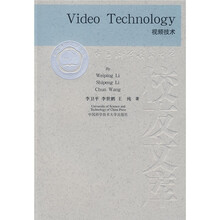Preface to the USTC Alumnis Series
Preface
1 Introduction
2 Early Days of Video Technology
3 Analog Video
3.1 Difference between Video and Film
3.2 Interlaced Scanning
4 Digitized Video
4.1 Video Sampling
4.2 Pixel Quantization
4.3 Color Sub-sampling
5 Video Coding
5.1 Basic Principles
5.2 Three Stage Model
5.3 Signal Processing for Compression
5.3.1 Prediction
5.3.2 Motion Compensated Prediction
5.3.3 Linear Transforms
5.3.4 Motion Compensated Transformations
5.4 Quantization
5.4.1 Scalar Quantization
5.4.2 Vector Quantization
5.5 Entropy Coding
5.5.1 Huffman Coding
5.5.2 Arithmetic Coding
5.5.3 Lempel-Ziv Coding
5.6 Predictive Coding with Quantization
5.7 Symbol Formation
5 7 1 Run-Length Coding (RLC)
5.7.2 Zigzag Scanning
5.7.3 Zerotree Coding
5.7.4 Context Formation
5.8 Bit Allocation and Rate Control
5.9 Pre-processing and Post-processing
5.10 Fractal Compression
5.11 Scalable Video Coding
5.12 Transcoding
5.13 Object Based Video Coding
5.14 Model-Based Coding
5.15 Hybrid Natural and Synthetic Coding
5.16 Error Resilient Video Coding
6 Video Coding Standards
6.1 H.261
6.2 H.263
6.3 MPEG- 1
6.4 MPEG-2/H.262
6.5 MPEG-4 Part 2
6.6 H. 264/MPEG - 4 Part 10/AVC
6.7 AVS
6.8 H. 264/MPEG4 - AVC SCALABLE EXTENSION
6.8.1 Hierarchical Coding Structure and Temporal Scalability
6 8 2 Spatial Scalability
6 8 3 SNR Scalability
7 Applications
7.1 Good Old Analog Television
7.2 Video Tape
7.3 Video CD, DVD, HD - DVD, and Blu-ray
7.4 Digital Television
7.5 Video over IP
7.5.1 Technical Challenges and Possible Solutions
7.5.2 Bring Old Applications to New Level
8 Look into Future
8.1 New Types of Video Contents
8.2 New Video Coding Trends
8.3 Video Delivery
8.4 Mobile Media
8.5 Video Content Analysis and Search
8.6 Internet Video -- Media 2.0
8.6.1 Democratized media life cycle
8.6.2 Data-driven media value chain
8.6.3 Decoupled media system
8.6.4 Decomposed media contents
8.6.5 Decentralized media business model
8.7 Going Back to Basics
References

 缺书网
缺书网 扫码进群
扫码进群








